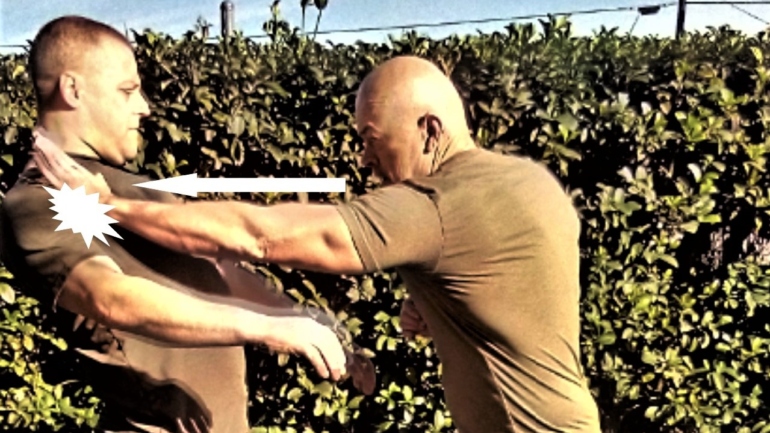The goal of Kajukenbo is to hit first, hit fast, and hit hard be it with your striking techniques or your throws. Kajukenbo includes multidirectional movements, short starts and stops with bursts of speed, rapid change in direction, explosive power delivery of an impact through contact with an opponent or the ground or a wall, instant power reception at a point of contact and explosive power delivery to the opponent or combatant.
The entire body can be called the kinetic chain; however, the body consists of several chains depending on what is being done. Kajukenbo demands multidimensional movements, combinations of linear (this includes lateral), vertical, and rotational actions.as we flow from one technique to the next in our combinations.
1.) Rotational Movement – You want to generate torque on every plane you possible can. No one part of the body moves independent from the other. There are several types of torque. The feet pivot to create torque. When you use the ground you are not anchored, use the feet to produce a short whipping torque for close in fighting or a long whipping torque as in longer range (an example of long range, would be boxer Floyd Patterson’s gazelle punch).
Body torque uses the rotation of the hips, there is punching torque that utilizes the rotation of hand or wrist, like a boxer that turns over his fist upon impact of his punch. Torque relies on the snapping and whipping of the weapon and entire body at the correct time, distance and speed and to generate power.
2.) Linear Movement – Moving the body in a straight-line forward, backward, left to right or right to left. Moving directly toward the target allows the weight of the body to be added to the energy of the strike. Moving directly off line creates angles.
3.) Vertical Movement – A sudden change of height by bending your knees and dropping your hips as you pivot or move forward fighting close in should be implemented (see step 3. on next page). Most people take a step back when they are hit. Advance incrementally and keep taking over his space. Moving him backwards takes your opponent out of good position and unable to launch an effective attack.
Ballistic Action – Maximum effective speed and Power
When it comes to Kajukenbo being ballistic is a key attribute. Ballistic is Optimal Effective Speed the integrating of speed, power, spatial awareness and agility. To understand speed in the context of how it relates to Kajukenbo within the pages of this text, it is crucial to gain a more definitive understanding of the concept.
There are 4 types of speed:
1.) Maximum linear speed is how fast a person can move in a straight line.
2.) Multi directional Speed is the ability to accelerate, stop and change direction.
3.) Movement speed is how fast you can execute a technique.
4.) Reaction speed is integrating all the above while responding to a moving target that is trying to resist, defend or fight back.
Co-ordination of all body mechanics, speed, agility, distance and timing for Kajukenbo is one’s ability to understand where his or her body is in space in relation to the ground and the attacker or opponent. It’s imperative to react instantly and instinctively to any given situation and be able to access your skill set on demand. Often successful techniques are applied at the right time in an explosive manner that causes damage or disrupts the opponent’s posture and balance.
The blending of speed, body mechanics, and body weight transference, combine to create maximum effective speed and power is called ballistic action or motion. Ballistic movements that are performed with maximal velocity and acceleration can be considered ballistic actions. Ballistic actions are characterized by high firing rates, brief contraction times, and high rates of force development.
As stated before being ballistic in motion is the goal. An optimum posture is a dynamic controlling quality. Optimum alignment of our human movement system is and should be the cornerstone of ANY fighting system. Poor posture leads to muscle imbalances, poor alignments of joints which results in the impairment of our movement.
We want the speed of our strikes to be fast as possible, but still be able to pivot the body from stance to stance, and use the mechanics of the techniques and inflict damage. In training start working the techniques and/or strikes at a speed where you can properly use the body mechanics and stances of the strike or technique.
Fighting is Rhythm
I differentiated speed into four primary functional capacities corresponding to Kajukenbo.. However, there is another type of speed, conceptual speed. In addition to maximum linear speed, multi directional, movement and reaction speed, there is a tempo or rhythm factor in the cognitive domain in the form of conceptual speed which should be identified.
Fighting is rhythm, a musical rhythm or mathematical code, if you will. All fighters have this mathematical rhythm. A beginner learns in steps. The rhythm at that beginning level looks like this: 1 and 2 and 3 and 4. The object is to change this rhythm or break the rhythm. There are two ways to look at this. One way to change the rhythm is to simply eliminate the “ands” between each number like this: 1234. Another way to look at it would be to add and interject a technique on the half beat, in other words strike on the “ands”. You hit on the “1” then hit again on the “and” and so on and so on. This concept, either way you choose to look at it, makes one seem extremely fast.
Defense Against Right Roundhouse Punch

1.) Both you and the attacker are in a right foot forward fighting stance. Your knees bent and your rear foot is slightly raised off the ground. 2.) The attacker shuffles forward and executes a lead round house punch. Pivot on the right foot counter clockwise toward nine o’clock and strike the attacker’s right arm with the boney area of both of your forearms. 3.) From the point of contact, bend the knees and drop into right hammer fist and left forearm strike knocking the attacker’s arm downward.

4.) Immediately turn clockwise toward twelve o’clock and execute a right hammer fist to the attacker’s jaw or neck. Your left hand chambers at your right shoulder 5.) Pivot on the rear foot clockwise toward ten o’clock and deliver a straight left punch to the attacker’s jaw. You right hand chambers at the right side of the head. 6.) Pivot counter clockwise toward nine o’clock and strike the left side of the attacker’s jaw with an left outward hand sword turning his head to this right.

7.) Dropping the hips, deliver a right hammer fist to the left side of the attacker’s jaw. The right left hand rechambers at your right shoulder. 8.) Pivot clockwise toward twelve o’clock and strike the front of the attacker’s right shoulder with a hard left open hand check and grab his shirt at the area struck. 9.) Pull with the attacker toward you as you shift your right foot back slightly and push off it to move toward eleven o’clock.

10.) When you drive of the left foot step your right foot to eleven o’clock and to the outside of the attacker’s right foot 11.) Pulling with your left hand bring your right knee forward and up in between your left leg and the outside of your opponent’s right leg. Swing your right leg downward and back without letting your right foot touch the ground. The back of your calf should make contact with the back of your opponent’s calf. Continue your pull with your left hand bringing your left elbow to your left hip. Continue with the sweep taking your opponent’s leg upward. Sweep his leg high. While sweeping your opponent’s leg drive his shoulder downward to the ground by continuing to pull your left elbow to your left hip. 12.) The attacker lands on his left side and is turned away from you. Keeping control of his right arm, immediately place your right knee and shin against the attacker’s ribs and back.

13.) Drop your hips pivoting counter clockwise on the ball of your right foot and deliver a right straight punch downward to the side of the attacker’s head. Your left hand chambers at your right shoulder. 14.) Twisting your hips back clockwise immediately follow up with a open hand check or a left outward edge of hand strike to the attackers jaw or side of head. As your left hand checks or strikes your right hand chambers. 15.) Pivot again counter clockwise on the ball of your right foot and drop your hips downward as you deliver a straight punch to the attackers jaw, rechambering your left hand at your right shoulder.



